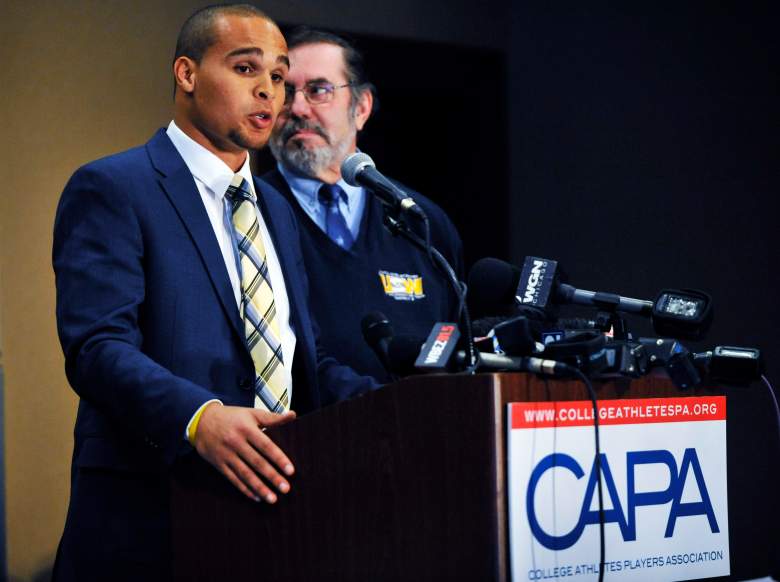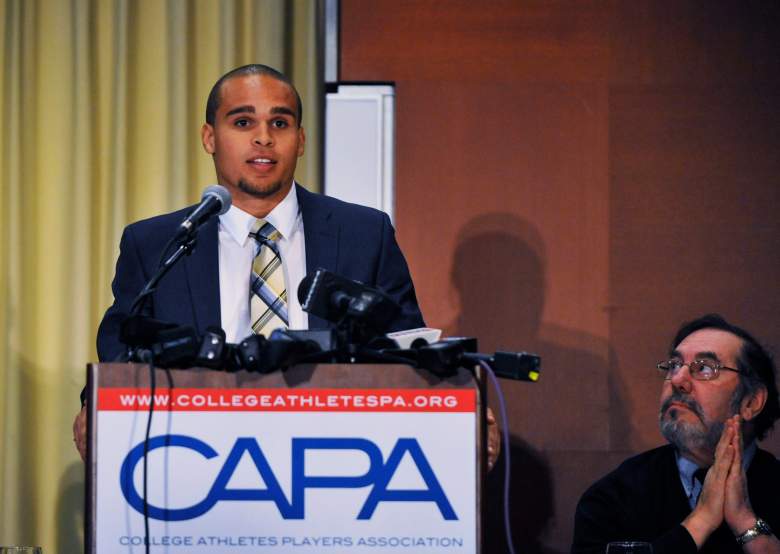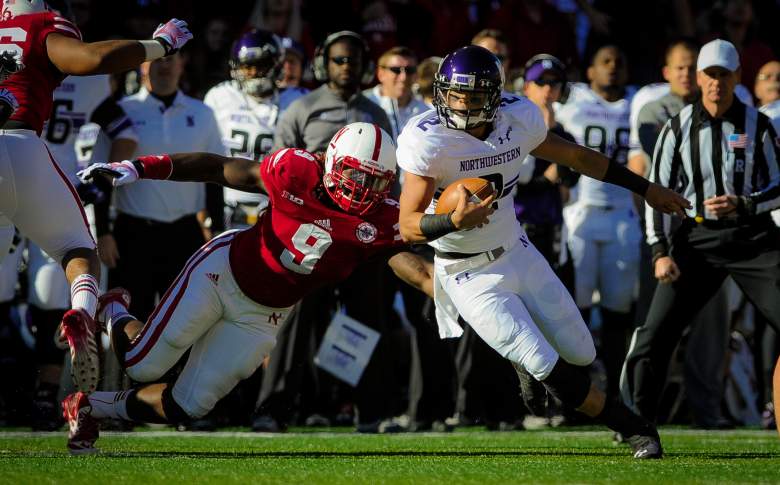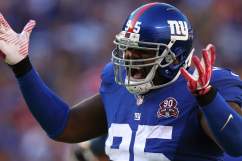
(Getty)
The National Labor Relations Board struck a major blow to the college unionization movement, dismissing the petition by Northwestern football players on Monday morning.
The NLRB said that it could not rule on the movement, which first gained traction in 2014, due to a lack of jurisdiction on the case.
Here’s what you need to know about the decision and the background of the move to unionize:
1. The National Labor Relations Board Decision Was Unanimous

(Getty)
The National Labor Relations Board, on Monday morning, dismissed a petition by Northwestern football players who were seeking unionize. The five-member Board declined to rule on the case and preserved the NCAA idea that college athletes are primarily students first.
The Board did not explicitly rule on whether or not players are university employees but the decision is still a major setback for the unionization movement. The NLRB also focused its decision on the novelty of the case, citing that no other team in a sports league had come before the Board seeking to unionize.
The Board decided that allowing one team to collectively bargain on behalf of an entire sport would not promote stability in the market but would actually lead to changes in the competitive balance of the sport.
2. The Union Movement Was Led by Former Northwestern QB Kain Colter

(Getty)
The original move to unionize college football was sparked by former Northwestern quarterback Kain Colter in 2014. Colter was joined in his efforts by Ramogi Huma, the president of the College Athletes Players Association, and Leo W. Gerard, the president of United Steelworkers.
Although in-school payments were a consistent issue, Colter said his main focus for the union was to establish consistent medical care both during and after a player’s college career. He said:
The same medical issues that professional athletes face are the same medical issues collegiate athletes face, except we’re left unprotected. The N.F.L. has the N.F.L.P.A., the N.B.A. has the N.B.A.P.A. and now college athletes have the College Athletes Players Association.
The labor law dispute came down, mostly, to hours. The unionization movement claimed that if college athletes were, mainly, students than they should devote 40 hours to training, traveling and practicing.
3. The NLRB Only Has Jurisdiction on the Private Sector
One of the biggest reasons the NLRB had for its decision was its lack of jurisdiction over the public sector. In other words, the Board cannot rule on public and state schools, which make up more than 85% of FBS teams. Northwestern is a private school.
The NLRB released a statement explaining the decision:
As the NCAA and conference maintain substantial control over individual teams, the Board held that asserting jurisdiction over a single team would not promote stability in labor relations across the league
The board added that it could not assert jurisdiction over the entire NCAA because of the “nature and structure” of the FBS.
4. Peter Sung Ohr, a Regional Director of the N.L.R.B Ruled Last Year That Players on Scholarship Were Employees
Northwstern university had requested a review of the original ruling, which had been made Peter Sung Ohr, the regional director of the NLRB in Chicago, in March 2014. At that time Ohr ruled in favor of the College Athletes Players Association.
In his 24-page ruling, Ohr wrote that football plays at Northwestern fit the common law definition of an employee and that football is a service that players provide the university. He continued by saying that players sign a “contract” that stipulates the conditions they abide by to keep their scholarship which is a form of “payment.”
The university appealed that Ohr had dismissed a previous precedent, citing a 2004 ruling that teaching assistants at Brown University were primarily students and could not collectively bargain.
5. Northwestern Athletes Don’t Have the Option to Appeal
According to NBC Sports, the move to unionize college sports cannot appeal the National Labor Relations Board decision .
Northwestern had appealed last year’s ruling by regional NLRB director Peter Ohr, leading to a vote by football players on whether or not they wanted to actually form a union. Those ballots had been sealed during the appeal and will now be destroyed.
Advocates say unionization would help athletes protect their own health and financial interests.

Comments
NCAA Union Bid Denied: 5 Fast Facts You Need to Know